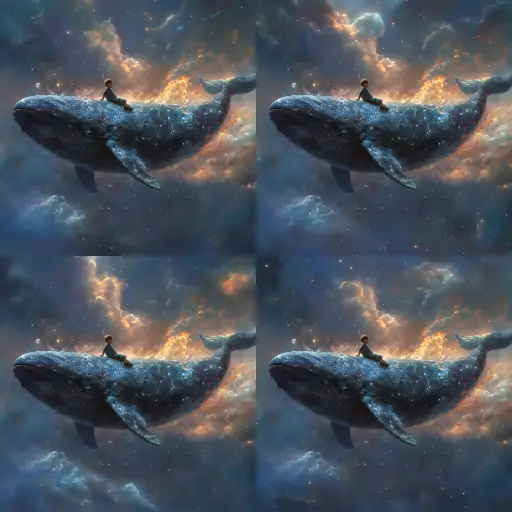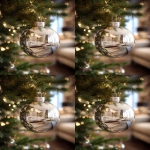Explore the Best AI Image Gallery

Quantum Creativity: Unlocking New Dimensions in the Arts
The world of art has always been a space for innovation, pushing boundaries and exploring new frontiers. Today, a revolutionary force is emerging that promises to redefine creativity as we know it: quantum computing. This nascent field, harnessing the enigmatic power of quantum mechanics, holds the potential to unlock unprecedented creative possibilities, transforming how artists create, interact with audiences, and even perceive the world.
Quantum Leap for Artistic Expression
Imagine a musician composing intricate symphonies guided by algorithms that simulate the complex interactions of atoms. Picture a painter whose brushstrokes are informed by quantum simulations of light and color. This is not science fiction; its the tantalizing future that quantum computing promises for the arts.
Quantum computers, unlike their classical counterparts, can process information in fundamentally different ways, leveraging superposition and entanglement to perform calculations at an astonishing scale. This computational prowess opens doors to novel creative tools:
- Generative Art: Quantum algorithms can generate intricate patterns, textures, and even entire artworks based on pre-defined parameters or user input, pushing the boundaries of artistic expression.
- Interactive Experiences: Artists can create immersive installations and performances that respond to viewers in real time, leveraging quantum sensors and processing to create dynamic and personalized encounters.
- Music Composition: Quantum algorithms can analyze musical structures, generate harmonies, and even compose entirely new pieces based on specific styles or themes, revolutionizing the composition process.
Beyond Aesthetics: The Ethical Landscape
As with any transformative technology, quantum computing in the arts raises important ethical considerations:
- Ownership and Authorship: Who owns the copyright to an artwork generated by a quantum algorithm? How do we define authorship when human creativity is intertwined with machine intelligence?
- Bias and Representation: Quantum algorithms are trained on data, and if that data reflects existing biases, the resulting artworks may perpetuate harmful stereotypes. Its crucial to ensure fairness and inclusivity in the development and deployment of quantum creative tools.
- Access and Equity: Quantum computing is currently expensive and resource-intensive. How can we ensure equitable access to these powerful technologies for artists from diverse backgrounds and geographies?
Quantum Futures: A Canvas Yet Unpainted
The future of quantum creativity is brimming with possibilities, a vast canvas awaiting the brushstrokes of imagination. As researchers continue to unravel the mysteries of quantum mechanics and develop more accessible tools, we can anticipate:
- Hybrid Creative Practices: Artists will increasingly collaborate with quantum algorithms, blending human intuition with machine intelligence to create works that transcend traditional boundaries.
- Personalized Art Experiences: Quantum technologies will enable the creation of artworks tailored to individual preferences, generating unique and immersive experiences for each viewer.
- Quantum-Inspired Aesthetics: New artistic movements will emerge, inspired by the patterns, symmetries, and paradoxical nature of quantum phenomena, pushing the boundaries of visual and auditory expression.
The intersection of quantum computing and the arts is a testament to human ingenuity and our relentless pursuit of innovation. As we delve deeper into this uncharted territory, we can expect groundbreaking creations that redefine what it means to be creative in the 21st century.


](https://images.ai-img.art/thumbnails/150/0ff66bef3cc88ad00980f6e2b342269a09f1be3416b609f6f23a05760c4b9881.webp)
](https://images.ai-img.art/thumbnails/150/ff1c1d43f82864cd0e6eccac98f4af6deac26562f29153c1095bc00f80aed2fb.webp)
](https://images.ai-img.art/thumbnails/150/988aa4a69efdeabd6f571e6e831eaa6f7fc403f6e453e13ed65f17e4d0c5988c.webp)


](https://images.ai-img.art/thumbnails/150/7f05f32f5d38a8de9381d910b6caed58e573752cc3336fe2fddcd3284241da08.webp)

](https://images.ai-img.art/thumbnails/150/82bc4d917a5f041064f741293d55081e3e7ff555944bcbfc6dc1f2f27fd37f45.webp)


](https://images.ai-img.art/thumbnails/150/40e314c6a980265d2e43145d817df6c2de78540fb3b449d319fc47a9a75c65c8.webp)










](https://images.ai-img.art/thumbnails/150/b9ffe95c383ec1a8522d40a1e2bcf7757314e46ecb4cff50f1c42291cb0dd9f8.webp)